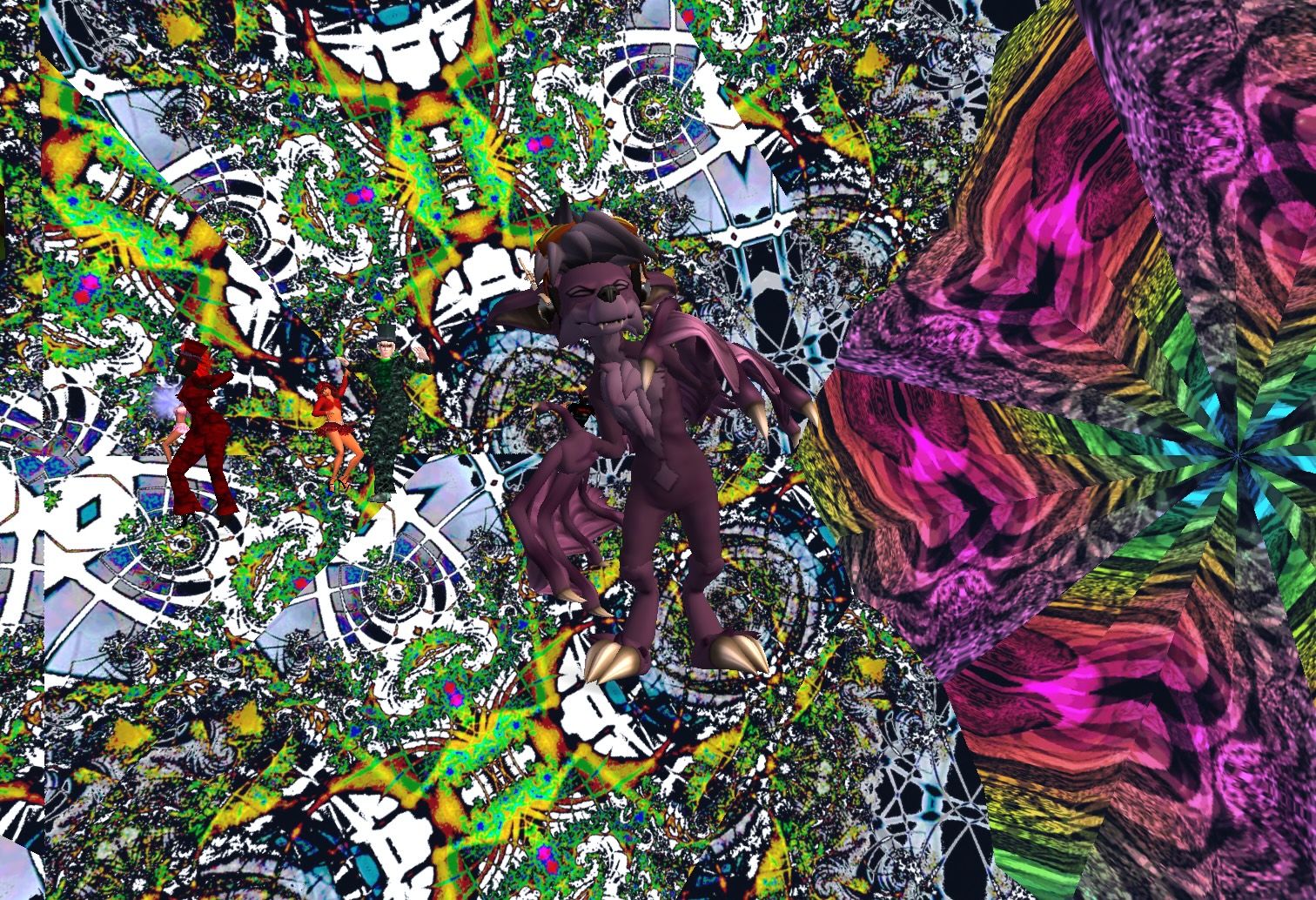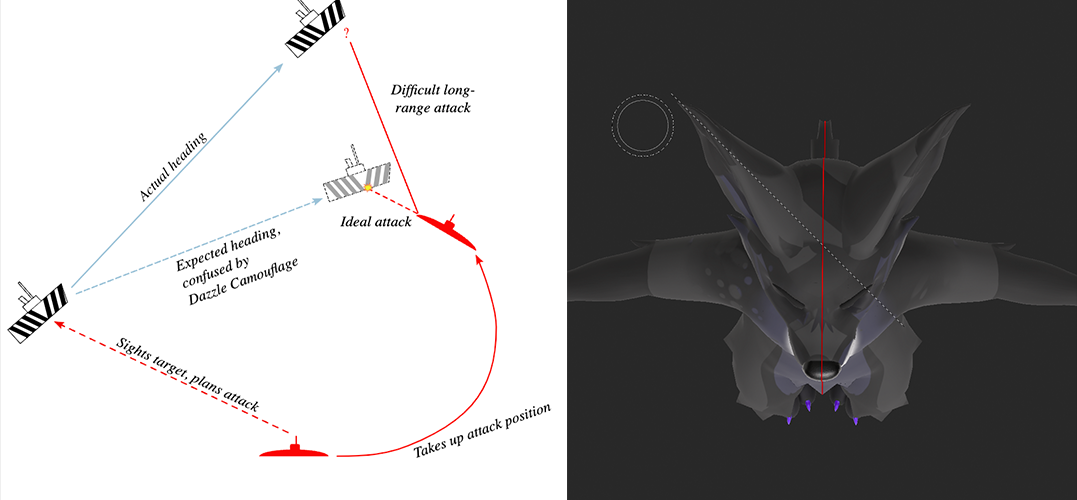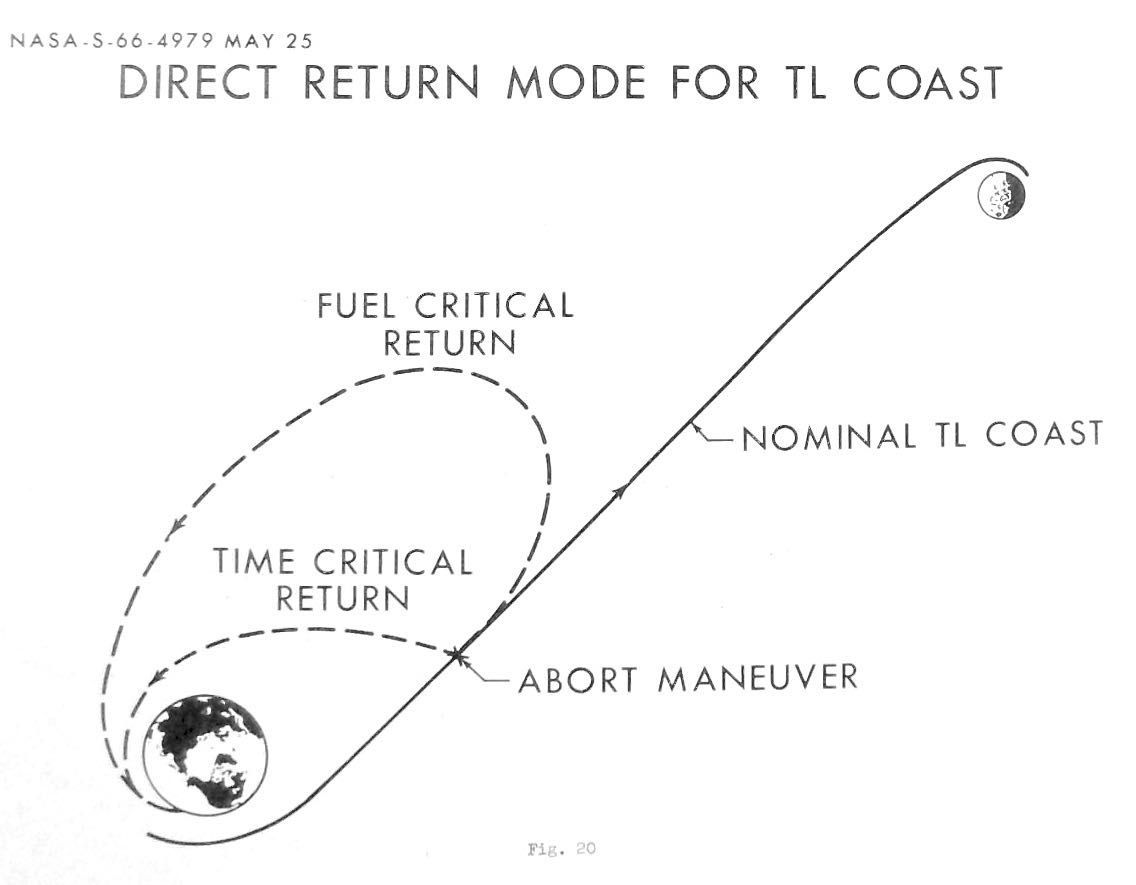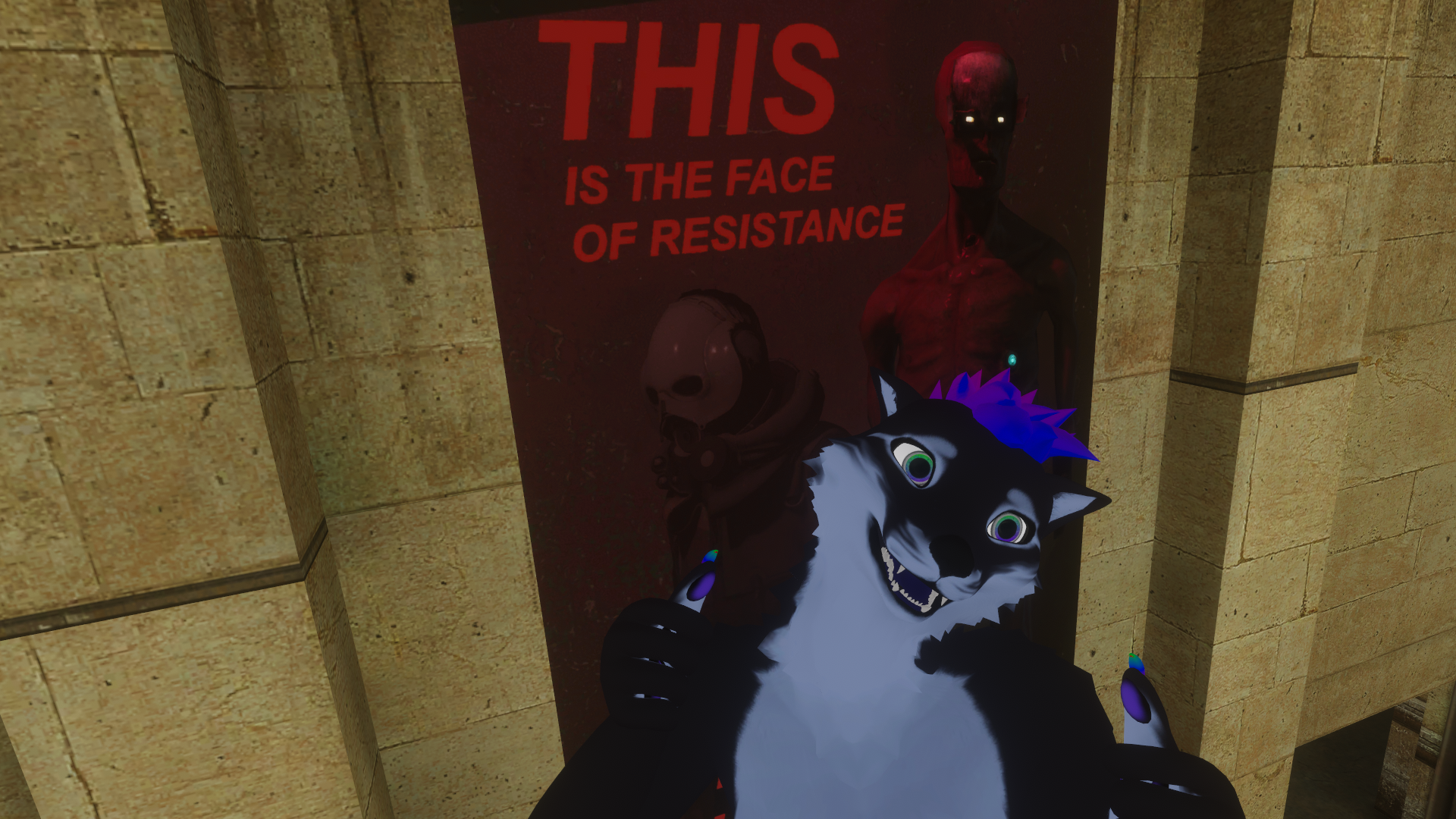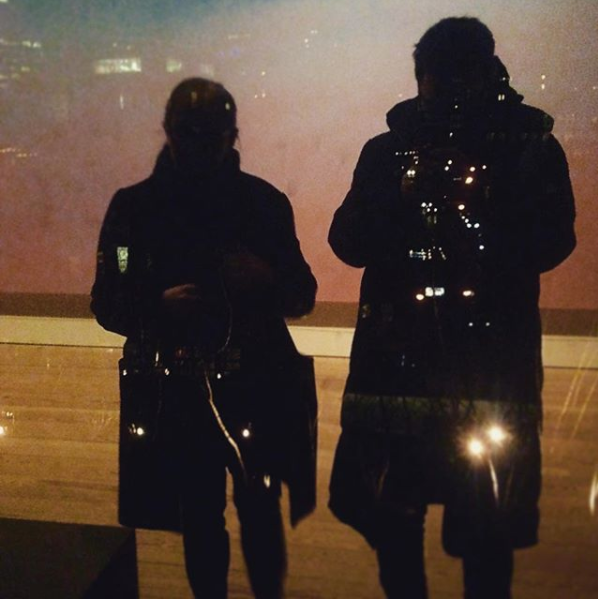
Part II: Virtually Sleeping with No Body
Below is the essay I first drafted in November 2020, after the first day in VR where things started to make more sense. It's a sex thing! And it isn't! I reconnected with an old friend, go dancing, and meet a well-endowed dinosaur.
Chapter two of the CYBERDECK project.
- Part I: VR Goes Where?
- Part II: Virtually Sleeping with No Body
- Part III: A Sinking Ship at the End of the World
- Part IV: Rated Arrrrgh: A VR Postscript
Getting a hug from a friend in virtual reality is not the same as in real life, but it surprises me how nice it is. There is no physical sensation, not even the haptic hand-buzzer feedback you get from a video game, you simply pass through each other like ghosts. But what is very real: the happy little burst of oxytocin. I feel welcome. I’m also told that some people say they experience phantom chills when a “body” touches or passes through them, and later I'll meet someone who claims they have had sessions with a hypnotist to try and increase this sensation.
The hug is a greeting: On my third foray into VRC, I have spent a couple of hours exploring sleep rooms before meeting up with a friend. I had been told earlier that this was a favorite pastime in VRC: taking a nap in an ideal virtual relaxation space, and I’d wanted to see it for myself. I didn't quite believe it, or figured that if there were virtual bedrooms, they had to be for more than sleep. After confirming that yes, indeed there are a lot of these rooms (mostly by Japanese creators, small and perfect replicas of hotel rooms, onsen, cosy train stations and a lovely sci-fi version of the Svalbard seed vault reimagined as a high-end mountaintop-capsule-hotel), I make my way to a dance club where my friend spends most of his time. It turns out to be amazingly fun and I spend a couple of hours dancing and chatting. I’m sore the next day.
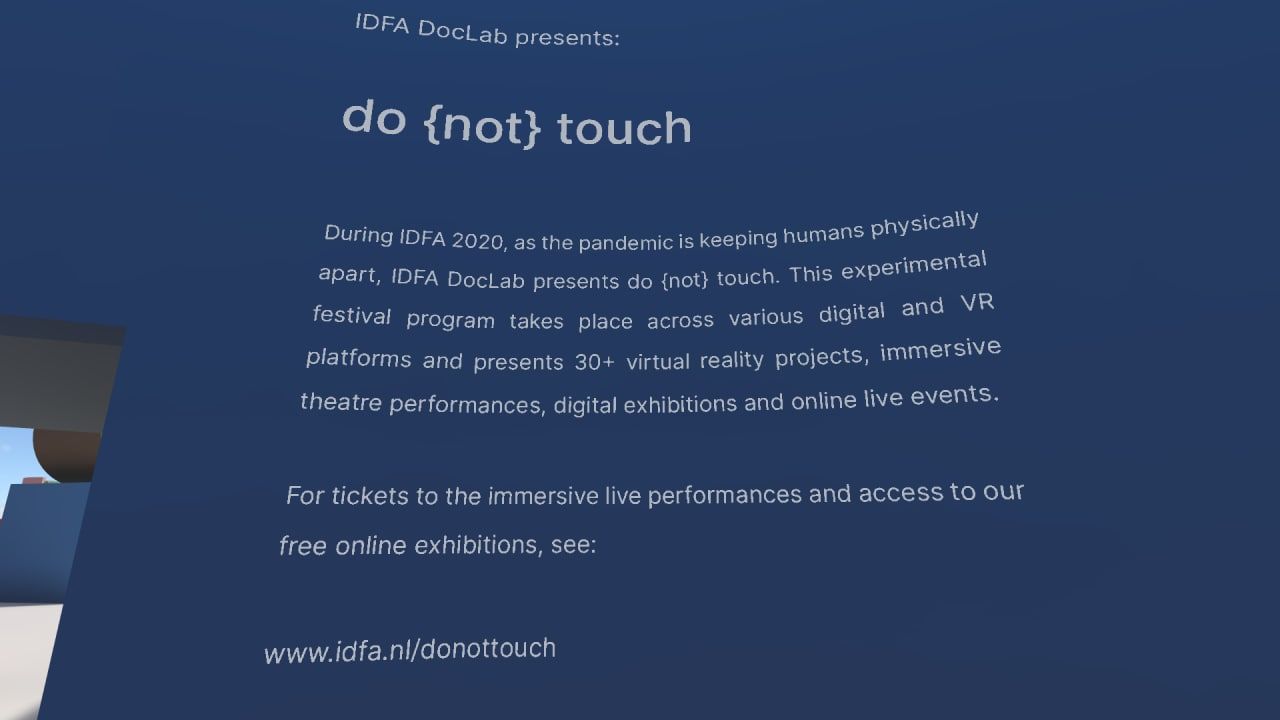
“This is my friend! He logged in ON HIS OWN!” my guide declares to no one in particular . “IT BEGINS” says a voice somewhere south of my knee. I look down to see a two-foot tall fuzzy weasel creature with glowing blue eyes and a soft Norwegian accent peering up at me, looking adorably like one of the Porgs from Star Wars, if they had been designed by Scandinavians. (I will discover later this avatar is another VRC-specific species, known as the Best Boi, which has enough fictional and VRC-life lore to fill several books over).
“Uh oh, what does that mean? I ask”
“Oh well you’re addicted now! First you just have the helmet and you don’t take it off for more than an hour or so and don’t notice, then you get sleepy but you’re still here and you take a nap… that’s how you know you’re adjusted. Next thing you’re just going to drop 600 bucks on full body tracking.”
“Because?”
“Because you’re going to want to do this: the short fuzzball does a small hip-wiggle, his paws and tail move naturally. “And you’re going to want to sit, and lie down, all of that’s impossible without it.”
It’s true, I feel a bit paralyzed from the waist down, and this small creature is remarkably expressive. I’m not a particularly good dancer, but I love dancing: I make up for my lack of coordination with enthusiasm. And I confess it’s deeply unsatisfying that my flailing around the room is translated to a barely-there rocking motion. If I really move a lot I can get my off-the-shelf avatar to gently two-step. I’m reminded of the the time my partner took me to a Jay-Z concert at SXSW (it was a great show, but have you ever seen a room of 3000 white nerds trying to learn to dance? Jay-Z is a patient man.)
“Anyway… says my friend, leaning over to join the conversation… You seem to be enjoying yourself and I for one would like to see the rest of those badass moves.”
An inevitable question, or at least the one everyone seems to want to ask when I talk about virtual “sleep,” “touch,” “haptics” “oxytocin” and especially the peculiar bodies, especially from the people for whom furry subculture in particular is a punchline: is this a sex thing?
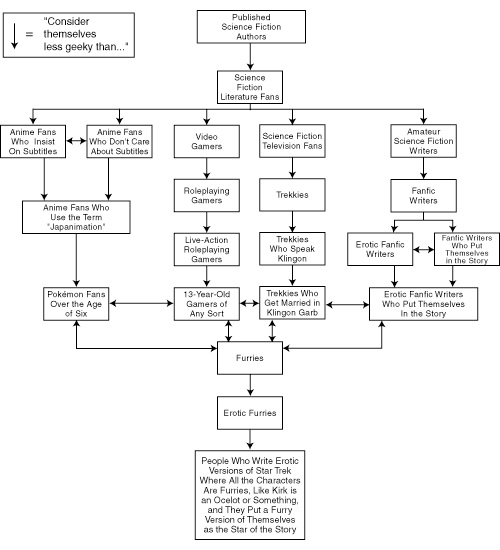
A chonky orange dinosaur with sparkly-rainbow-Elton-John sunglasses saunters into the club and starts chatting away about an SDK, or a mod, or something related to the world that I don’t quite understand, but he seems to know what he’s talking about so I eavesdrop. Questions are asked, and at some point he says “Yeah, but you’re missing the point…” The phrase punctuated with a “ta-da” gesture with his claws. If anyone hasn’t noticed before they do now: this avatar isn’t naked exactly, but the thong covering his rather large package doesn’t leave anything to the imagination. He’s hung like a dinosaur, although to be fair it is… proportional? “Holy shit!” someone says “You’ve got a cock!"
In Second Life, and most virtual worlds with avatars, genitals are a thing: they are usually third-party and need to be attached to smooth doll-bodies, but it is not unusual to see anatomically correct avatars (for some definition of anatomy and some definition of correct) moving about. This is also a side effect of the fact that when SL launched, it did so as an explicitly 18+ platform (initially there was an independent "teen grid" that was an entirely separate offering, later the two were merged but adult content was restricted to a rating system and access required an ID verification process. Briefly, SL was rumored to be working on an "adult only" themed world, which never emerged).
SecondLife seemed built with the idea that adults and teens alike might use the service, VRC takes the infantilizing "family friendly" approach of actively punishing adult content if it's not kept secret. It's a strange oppressive approach: the folks who are apt to drop north of two thousand dollars on a full PC and tracking gear setup, the folks who are most likely to be involved in the creation of VR, the ones who actually occupy and live in these worlds, they're not children. And while not all adults are necessarily interested in "adult" content, it's generally a part of being a healthy human. I can't help but think about the early Internet discourse about the future we're living now. In that story, BDSM, queers, body-modification and hallucinogenic drugs were as much a part of the discourse as the latest hardware and code itself. It seems bizarre to be in a future with the opiate crisis, search engine funded life-extension and such starch-white fences.
In any case, VRC explicit content is comparatively rare: the ambiguously defined “NSFW (Not Safe For Work)” is forbidden in public, and forbidden on live streams. The company goes so far as to terminate accounts that have posted content they deem unacceptable, reportedly even banning "transgressions" posted on private forums, even if that content only resembles VRC.
This level of moral policing from a tech company is a bit shocking in 2020, where most companies are scrambling to take the equally terrible position that they have no moral position at all. It is, as a tech-journalist friend put clearly, "probably actionable," and it's dangerous for cultural reasons. In any case, avatar customization of any kind is hard! You cannot (yet) attach anything to your body, neither a hat nor a backpack nor a pair of breasts. You can’t even change your hair or eye color easily. Avatars require significant modification in several different pieces of professional software, plus a few hacks and tweaks. Having done this, if you show up in public with your new sexy bits, or even post a screenshot, you risk being banished forever. It generally seems not worth the effort.
Another thing: I'll learn more later, but at first blush VRChat doesn’t seem particularly well suited to online sex. Cybersex in most corners of the internet is text-based erotic roleplay: a collectively written romance novel (or porn, as you prefer), and typing in VRC is impossible. There’s voice chat, of course, but maybe just because I’m of the generation that doesn’t even like work voicemail, the idea of standing around having “phone sex” seems cringe-inducingly awkward. I don’t doubt for a moment that people do what people do, but I really believe what I’ve been told: sleeping in VRC is not a metaphor. People actually lie down and fall asleep with a hot, heavy computer monitor on their face.
Is that weird?
Like many of us, I live in a nice but modest apartment. It’s too crowded, especially during a pandemic. I hear my neighbors easily, there’s too much in too small a space. I don’t sleep that well as a rule.
I have checked into hotels, or extended my work trips in them, for the express purpose of getting extra sleep in a heavily soundproofed room where I could set the AC on high and have a whole bed with way too many pillows all to myself. It’s a real luxury, and it’s wonderful. And it’s comparatively expensive: A hotel for a night in NYC is roughly the cost of the full body tracking system I would need to shake my new virtual tail more convincingly.
Once, during my tenure at IBM, our team met with Robin Chase the founder and CEO of ZipCar, a US based car-sharing service. During her talk, Chase suggested as a thought experiment that we re-contextualize "hotel" as “bed sharing platform,” a mental leap that feels instantly weird. Hotels are quite common, but the idea of a public mattress that hundreds or thousands of people pass around feels somewhat creepy, possibly unsanitary, and not at all in keeping with capitalist notions of private space.
Timesharing a bed with strangers seems "weird," and yet in some cases we might spend thousands of dollars for the privilege. It’s a matter of perspective (or marketing) - but is this any weirder than falling asleep on your own furniture while wearing a small laptop strapped to your face?
Is VRC used for “adult content?” Surely yes. Everyone and everything on the internet eventually arrives at sex, and this shouldn’t be surprising: humans are social creatures, sex is social, and in an environment potentially free of disease, stigma and guilt, two-story dinosaurs in thongs might find each other and do what consenting dinosaurs in thongs are wont to do. But far more compelling, and also more upsetting, is the idea that we might use this cutting edge immersive technology to get some personal space. Some peace and quiet. As a “substitute” for what we might get otherwise.
This particular uncanny: the idea that the virtual might be fulfilling a human need for community, connection, breath - for emotional and physical room, for mental health - these thoughts are troubling. But as with most new technologies, we should be careful not to conflate the symptom with the cure. Such engagements with the “virtual” feel disturbing not because they exist but because the technology highlights their artificial scarcity. To believe that an emotional connection made online is less-real than one made in person is to privilege a luxury of relaxed social interaction at the same time we continually work to make such experiences difficult to obtain.
In our current configuration, our society constantly and consistently treats basic human needs (healthcare, clean water, food and comfort) as if they were luxuries. This is why I put substitute in quotes above, and this is the plot of many a VR-centric post-apocalypse in our everyday fiction: a simulacrum of reality, champagne and coffee for the rich and flavored water and food paste for the mob. In a world of food-deserts and profit-based healthcare, aren’t we firmly in this territory already?
It’s hard to believe a VR headset could make this much worse - but then, the cheapest and most accessible headset right now is being developed by a company co-founded by a team including a pro-Trump right-wing misogynist, a guy best known for soliciting children for sex, and another guy accused of using the specific properties of immersive tech to attack women. After cashing in through an acquisition by a certain ad-farm-masquerading-as-a-commons, our guy moved on to war profiteering. Oh, and a Facebook account is now mandatory, and you can de-anonymize tracking data with close to 95% accuracy and less than 5 minutes of data. So there's that.
I've also spoken more pragmatically (but no less significantly) with a trans friend who prefers text-based virtual worlds because people don't misgender her based on her voice the way they do otherwise. But then, another trans friend told me that without virtual worlds (VRC included), she doesn't think she'd still be alive.
“You know, it’s nice to know I’m not the only one with serious social anxiety!” yells a 8 foot robot-monster as he flails across the dance floor, in a virtual room full of 20 or so people. “I just have a hard time with strangers.”
I don’t know this person. I don’t doubt what he’s saying. I do doubt I’d ever see him in the physical equivalent of the room we’re in now: a tricked-out nightclub full of lasers and loud noises and strangers from around the world.
That people will use their technology to find connection, to find community: to deal with mental health and social sexual needs, none of this should disturb us. To the extent that this is the only way they can find these needs fulfilled, we should be disturbed indeed, but the disquiet should be aimed at the more difficult and thorny question: why this need exists in the first place. Why is this, the foundation of very human-ness, a product? Why do we allow our culture be turned into content and sold back to us? Can we do anything about that?
In part, the parade of illegal bodies: the unapologetically queer, the ban-able chonky dinosaurs with large packages, the avatars based on stolen cartoon copyright, the pirated music - these are answers. By owning the problematic and the "dangerous," at least aesthetically, we can carve out a space in even the most commercial of environments. The libraries may be colonized, but we can Kathy-Acker our own identities, and these remixes, cut as they are from a material that forms the territory of commercial dispute, are exactly radioactive enough that they will be forever unique and unclaimed. In the immortal words of Helga Goetze: Fucking is Peace. For a while, anyway.

My reverie is disturbed by loud quacking punctuated by the ubiquitous hard-style DONK. Someone has switched the music feed to some terrible YouTube video, and a Ukrainian guy dressed in an unlicensed Shirou Ogami av is poi-dancing across the room. He says he’s been dancing for two days. He claims to have a full mocap suit on. His voice sounds a bit ragged, like he might be on a substance stronger than music and pixels.
My friend leans over and checks on me
“Have you had anything to drink in a while? You’ve got to stay hydrated…”
He’s right, I’m thirsty. And I’m a bit concerned for Ogami-guy to be honest, he seems to be having fun but is going to be feeling that tomorrow. Someone mumbles something and he whoops “Oh Yeah!! gonna find some painkillers in a bit painkillers yeah!” I mentally facepalm, no, I actually facepalm... and my avatar follows... and this is all completely absurd but… not any more than any other club I’ve been to in real life. This is not weirder than room full of smoke and lights and a good-bad DJ playing only the hooks of all the top 40 songs. Not any weirder than a bed-share. Not any weirder than a lot of things humans do to connect with each other: drugs, sex, church, funerals, business casual. Not any weirder than how we always explore the edges, trying to find community at the end of a long and terrible Kaliyuga of the Anthropocene, where friend is a verb, your office is your bedroom and most phatic communication is emoji-based.
Besides, Ukranian-wolf-guy’s dancing is pretty good.
For a brief moment, far less than 15 minutes but longer than some ever get, the room is quiet and he’s our focus - he is in control. I find myself nodding along to a bass-heavy remix of Bonus Ducks and I think I really want those body-trackers.
Continued in Part III: A Sinking Ship At the End of the World
Did you enjoy reading this? Please share it! If you found it particularly helpful or interesting, I'd love a cup of coffee ☕ 💜
